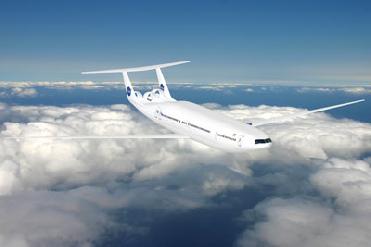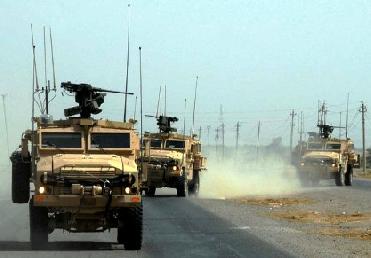
MIT�s D �double bubble� series design concept is based on a modified �tube-and-wing� structure that has a very wide fuselage to provide extra lift. MIT/Aurora Flight Sciences photo
WASHINGTON (PTI): In what could revolutionise commercial aviation, scientists claim to have designed a green plane which is estimated to use 70 per cent less fuel than the current aircraft and reduce noise and nitrogen oxide emission.
A team at Massachusetts Institute of Technology has come up with the design which it has presented to NASA as part of USD 2.1 million research deal to develop environmental and performance concepts which would guide the US space agency's aeronautics research over the next 25 years.
The MIT team, in fact, developed two designs -- the 180-passenger D "double bubble" series to replace the Boeing 737 class aircraft, currently used for domestic flights, and the 350 passenger H "hybrid wing body" series to replace the 777 class aircraft currently used for international flights.
The engineers conceived of the D series by reconfiguring the tube-and-wing structure. Instead of using a single fuselage cylinder, they used two partial cylinders placed side by side to create a wider structure whose cross-section resembles two soap bubbles joined together.
They also moved the engines from the usual wing- mounted locations to the rear of the fuselage. Unlike engines on most transport aircraft that take in the high-speed, undisturbed air flow, the D-series engines take in slower moving air that is present in the wake of the fuselage.
Known as the Boundary Layer Ingestion (BLI), this technique allows the engines to use less fuel for the same amount of thrust, although the design has several practical drawbacks, such as creating more engine stress.
According to Mark Drela, the lead designer of the D series, the design mitigates some of the drawbacks of the BLI technique by travelling about 10 percent slower than a 737.
To further reduce the drag and amount of fuel that the plane burns, the D series features longer, skinnier wings and a smaller tail.
Independently, each tweak might not amount to much, but the "little 5-percent changes add up to one big change", Drela said.
Although the plane would travel slightly slower than a 737, he said that some of this time could be recovered because the plane's wider size should allow for quicker loading and unloading.
The H series utilises much of the same technology as the D series, including BLI, a larger design is needed for this plane to carry more passengers over longer distances, say the scientists.
The MIT team designed a triangular-shaped hybrid wing body aircraft that blends a wider fuselage with the wings for improved aerodyamics. The large centre body creates a forward lift that cuts the need for a tail to balance the aircraft.
The large structure also allows engineers to explore different propulsion architectures for the plane, such as a distributed system of multiple smaller engines.
Although the H series meets NASA's emissions- reduction and runway-length goals, the scientists said they'll continue to improve the design to meet NASA's objectives.
 Previous Article
Previous Article Next Article
Next Article













The Indian Air Force, in its flight trials evaluation report submitted before the Defence Ministry l..
view articleAn insight into the Medium Multi-Role Combat Aircraft competition...
view articleSky enthusiasts can now spot the International Space Station (ISS) commanded by Indian-American astr..
view article